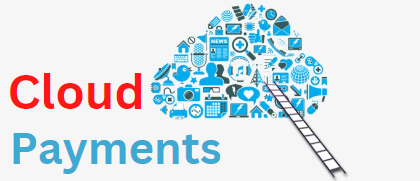How Cloud Payments are Transforming the Financial Industry
Cloud payments have emerged as a game-changer in the financial industry, revolutionizing the way transactions are conducted and transforming the overall landscape of banking and finance. With the rapid advancements in technology, financial institutions are increasingly adopting cloud payment solutions to streamline their operations, enhance security, and provide a seamless customer experience. In this comprehensive guide, we will delve into the various aspects of cloud payments and explore how they are reshaping the financial industry.
Exploring the Advantages of Cloud Payments for Financial Institutions
Cloud payments offer numerous advantages for financial institutions, making them an attractive option for modernizing their operations. One of the key benefits is cost savings. By leveraging cloud-based payment solutions, financial institutions can significantly reduce their infrastructure costs, as they no longer need to invest in expensive hardware or maintain complex on-premises systems. This allows them to allocate their resources more efficiently and focus on core business activities.
Furthermore, cloud payment enable financial institutions to scale their operations seamlessly. With traditional payment systems, scaling up or down can be a time-consuming and costly process. However, cloud-based solutions offer the flexibility to adapt to changing business needs quickly. Financial institutions can easily increase their transaction processing capacity during peak periods and scale down during slower periods, ensuring optimal performance and cost-effectiveness.
Another advantage of cloud payments is the enhanced accessibility and availability they offer. With cloud-based solutions, financial institutions can access their payment systems from anywhere, at any time, using any device with an internet connection. This enables remote work capabilities, improves operational efficiency, and allows for faster decision-making. Additionally, cloud payment ensure high system availability, minimizing downtime and ensuring uninterrupted service for customers.
How Cloud Payments Enhance Security and Fraud Prevention in the Financial Sector
Security and fraud prevention are paramount concerns for financial institutions. Cloud payments provide robust security measures to protect sensitive financial data and prevent fraudulent activities. Cloud service providers employ advanced encryption techniques to safeguard data during transmission and storage. Additionally, they implement multi-factor authentication and access controls to ensure that only authorized personnel can access the payment systems.
Cloud payments also offer real-time monitoring and fraud detection capabilities. Advanced analytics and machine learning algorithms can analyze vast amounts of transaction data in real-time, identifying suspicious patterns and anomalies that may indicate fraudulent activities. This proactive approach enables financial institutions to detect and prevent fraud before it causes significant damage.
Furthermore, cloud payments provide enhanced data backup and disaster recovery capabilities. Financial institutions can rely on the cloud service provider’s robust infrastructure to securely store and backup their data, minimizing the risk of data loss due to hardware failures or natural disasters. In the event of a disruption, cloud-based systems can quickly recover and restore operations, ensuring minimal downtime and uninterrupted service for customers.
Streamlining Financial Operations with Cloud Payment Solutions
Cloud payment solutions streamline financial operations by automating and digitizing various processes. Traditional payment systems often involve manual and time-consuming tasks, such as data entry, reconciliation, and reporting. However, cloud-based solutions automate these processes, reducing human error, improving efficiency, and freeing up resources for more value-added activities.
Cloud payments also enable seamless integration with other financial systems and applications. Financial institutions can integrate their cloud payment solutions with their core banking systems, accounting software, and customer relationship management (CRM) systems, creating a unified and interconnected ecosystem. This integration eliminates data silos, improves data accuracy, and enables real-time visibility into financial transactions and customer interactions.
The Role of Cloud Payments in Enabling Seamless Global Transactions
In today’s interconnected world, global transactions are becoming increasingly common. Cloud payments play a crucial role in facilitating seamless cross-border transactions for financial institutions. Traditional payment systems often involve complex and time-consuming processes, such as correspondent banking and manual reconciliation. However, cloud-based solutions simplify and expedite these processes, enabling faster and more cost-effective international transactions.
Cloud payments leverage advanced technologies, such as blockchain and distributed ledger technology (DLT), to enable secure and transparent cross-border transactions. These technologies eliminate the need for intermediaries, reduce transaction costs, and provide real-time visibility into the transaction status. Financial institutions can track and verify transactions at every step, ensuring transparency and reducing the risk of fraud or errors.
Leveraging Cloud Payments for Enhanced Customer Experience in Banking
Customer experience is a critical differentiator in the highly competitive financial industry. Cloud payments enable financial institutions to deliver a seamless and personalized customer experience, enhancing customer satisfaction and loyalty. With cloud-based solutions, customers can access their accounts, make payments, and manage their finances through user-friendly web and mobile interfaces. This convenience and accessibility empower customers, giving them greater control over their financial transactions.
Cloud payments also enable financial institutions to offer innovative and value-added services to their customers. For example, they can provide real-time notifications and alerts for transaction updates, account balances, and payment due dates. Additionally, cloud-based solutions enable personalized recommendations and offers based on customer preferences and transaction history, enhancing the overall customer experience.
Overcoming Challenges and Concerns in Adopting Cloud Payments
While cloud payments offer numerous benefits, financial institutions may face challenges and concerns when adopting these solutions. One of the primary concerns is data security and privacy. Financial institutions deal with sensitive customer information and must comply with strict regulatory requirements. To address these concerns, cloud service providers implement robust security measures, such as data encryption, access controls, and compliance certifications. Financial institutions should also conduct thorough due diligence and select reputable and trustworthy cloud service providers.
Another challenge is the integration of cloud payments with existing financial systems. Financial institutions often have complex legacy systems that may not be easily compatible with cloud-based solutions. To overcome this challenge, financial institutions should develop a comprehensive integration strategy, involving stakeholders from various departments and leveraging industry best practices. They should also consider partnering with experienced technology vendors or consultants to ensure a smooth and successful integration process.
Integrating Cloud Payments with Existing Financial Systems: Best Practices
Integrating cloud payments with existing financial systems requires careful planning and execution. Financial institutions should follow best practices to ensure a seamless integration process and maximize the benefits of cloud-based solutions. Firstly, they should conduct a thorough assessment of their existing systems and identify the key pain points and areas for improvement. This assessment will help them determine the specific requirements and objectives for the integration project.
Next, financial institutions should develop a comprehensive integration strategy and roadmap. This strategy should outline the desired outcomes, define the scope of the project, and identify the key milestones and timelines. It should also involve stakeholders from various departments, including IT, finance, operations, and compliance, to ensure alignment and collaboration throughout the integration process.
Furthermore, financial institutions should prioritize data migration and ensure data integrity during the integration process. They should carefully map the data fields and formats between the existing systems and the cloud payment solution, ensuring accurate and consistent data transfer. Additionally, they should conduct thorough testing and validation to ensure that the integrated systems function as intended and meet the desired performance and security standards.
Frequently Asked Questions (FAQs) about Cloud Payments in the Financial Industry
Q.1: What are cloud payments?
Answer: Cloud payments refer to the use of cloud-based technology and infrastructure to process financial transactions, such as payments, transfers, and settlements.
Q.2: How do cloud payments enhance security in the financial sector?
Answer: Cloud payments enhance security by employing advanced encryption techniques, multi-factor authentication, and real-time monitoring and fraud detection capabilities.
Q3: Can cloud payments be integrated with existing financial systems?
Answer: Yes, cloud payments can be integrated with existing financial systems through careful planning, comprehensive integration strategies, and collaboration between stakeholders.
Q.4: What are the advantages of cloud payments for financial institutions?
Answer: The advantages of cloud payments for financial institutions include cost savings, scalability, enhanced accessibility, streamlined operations, and improved customer experience.
Q.5: Are cloud payments suitable for global transactions?
Answer: Yes, cloud payments are suitable for global transactions as they leverage advanced technologies, such as blockchain and DLT, to facilitate secure and transparent cross-border transactions.
Conclusion
Cloud payments have emerged as a transformative force in the financial industry, offering numerous advantages for financial institutions. They streamline operations, enhance security and fraud prevention, enable seamless global transactions, and provide a superior customer experience. While challenges and concerns exist, financial institutions can overcome them by following best practices and partnering with experienced technology vendors. As the financial industry continues to evolve, cloud payments will play an increasingly vital role in shaping its future. By embracing cloud-based solutions, financial institutions can stay ahead of the curve and unlock new opportunities for growth and innovation.











